SHRM - Lecture 11: Compensation I
1/25
Earn XP
Description and Tags
After this lecture you should know the answers to the following questions: • How does organization’s strategy influence pay systems? • Why do organizations implement performance-based pay? • What factors influence the level of performance-based pay? • What pitfalls performance-based pay may potentially entail?
Name | Mastery | Learn | Test | Matching | Spaced |
|---|
No study sessions yet.
26 Terms
Which are strategic goals of compensation?
How do we attract talents and high performers to join our company?
How do we retain these good employees once they join?
How do we get employees to perform well while they are here?
Which elements are important in a compensation strategy?
Horizontal alignment: If you have group works, the tasks have to align with eachother. With interest pay in the individual task you may damage collaboration.
External competiveness: Look outside of organization, what are competitors doing? Pay above the market wage. If i want qualified people, I have to pay a decent wage.
Employee contributions: How involved are the employees in the company? Pay stock options instead of fix pay.
Pay mix: fix pay with team or individual bonuses
Which are the compensation objectives?
Fairness
Efficiency
Compliance (with the locals in the country you are operating in)
What is a Horizontal Alignment?
It is the term for an element of the compensation strategy.
When you have teams working on tasks, you must make sure that the tasks align with eachother. Individual compensation or interest pay fo the individual taks may damage collaboration.
What is External competiveness?
An organization has to look what competitors are doing and pay above the market wage, if they want qualified employees.
What are employee contributions?
It is about how involved the employees are in the company. If you pay your employees in stock options that’s a signal of close connection to the company.
Do people join because of pay?
Yes:
Job candidates look for organizations with reward systems that match their personalities.(competitive ppl who want to shine and get paid for that)
Talented individuals are attracted to companies that have strong links between pay and performance.
But:
Extrinsically motivated, materialistic individuals are more likely to apply. (self-selection: in the long-term u will have materialistic employees → change of culture)
What about teamwork?
Do people stay because of pay?
Yes:
Sorting effect/ Person-Job-Fit: Poor performers are more likely to leave than good employees in companies which use pay for performance.
Group incentive plans may lead to more turnover among top performers.
Dissatisfaction with pay as an important turnover driver.
But:
In Switzerland: employees quit for diffrerent reasons and pay is not one of them. (usually bc of bad leadership → willing to get paid less but better leader)
Do people perform because of pay?
Yes:
Sorting effect and incentive effect.
Well-designed compensation plan results in better individual and organizational performance.
Employees and managers believe that there should be a link between pay and performance.
But:
Mainly experimental, external validity problems. Field research is extremely rare.
Well-designed compensation plans are challenging: the right mix difficult.
It depends on what type of performance and behavior is rewarded; in some instances, incentives even backfire (is it result-oriented or collaboration, loyalty or putting effort into the daily tasks?)
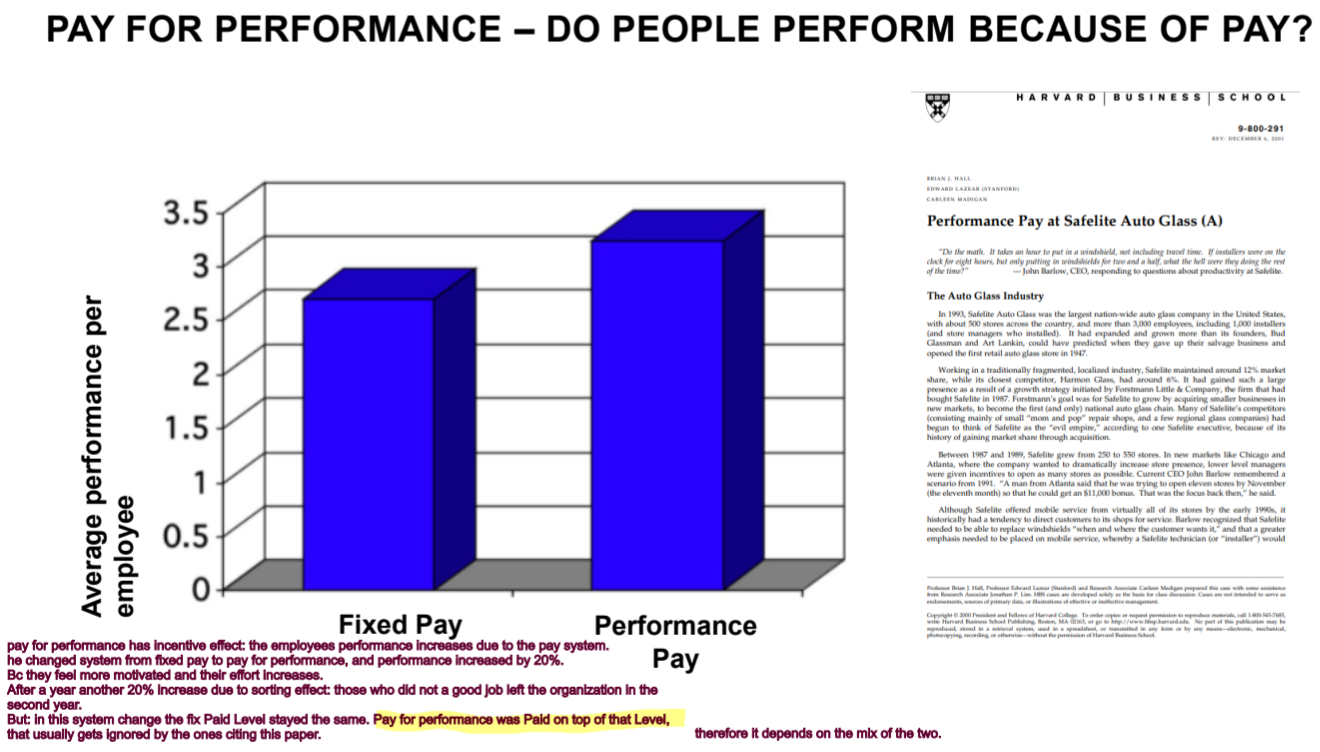
What is a sorting effect? What is an incentive effect?
Which could be challenges with pay for performance?
reliability and definition of performance management
individual or team level? (free rider problem)
keeping up intrinsic motivation (crowding out effect)
Preventing stress
Which criteria can be used in measuring performance?
results-oriented
past-oriented, ex. quantitative (profit, sales) and qualitative results (customer satisfaction)
behavior-oriented
presence-oriented, ex. relaiability, collegiality, loyalty, flexibility, effort.
person-oriented
future-oriented, ex. personality traits, qualifications, potential, leadership skills/potential.
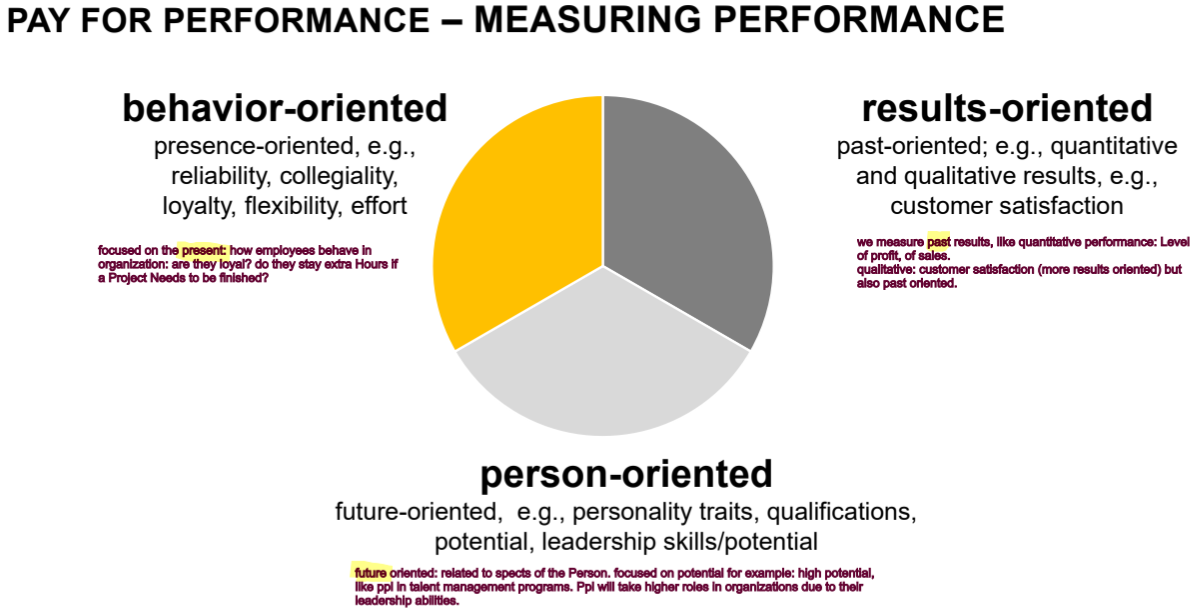
Solar, a company in the energy industry wants to adjust the weighting of various criteria of performance appraisal. The company has grown significantly in recent years and previously there was a focus on short-term performance. Now, the performance appraisal should serve more longterm flexibility and organizational learning. Additionally, an advantageous corporate culture has started to develop that is characterized by flexibility and collegiality. This culture should be strengthened. What change would you propose?
Person-oriented criteria and behavior-oriented criteria should receive more weight when compared to results-oriented criteria.
Key words: long-term felxibility and organizational leraning, flexibility and collegiality.
Which measures can you take as a company to prevent the free rider problem?
Size: Group small enough so that members can say who is slacking off (usually 8-10 ppl).
longevity and stability allow for social sanctions and peer pressure.
interaction within the group
working towards a common goal.
How should the team and their members be paid?
equal
proportion to base pay
decided by supervisor (prevent damage to team cohesion and so the group won’t exploit the pay)
team members decide themselves (democratically)
How can you ensure fairness across groups with pay for performance?
Explenation of problem: If you reward on a team level and a high performer is in a bad group, they will be paid less than if they were in a good group, beacause their preformance as a team overall is bad.
Solution: In companies with very high cooperation, it is most essential to create a real task interdependence and then support the task design with interdependent rewards.
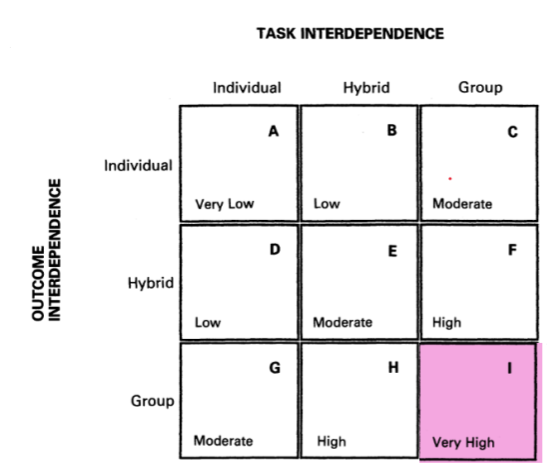
When does crowding out of intrinsic motivation happen?
There must be intrinsic motivation (purely repetitive tasks?)
Extrinsic reward is perceived as an external pressure & control
Activities that are usually done voluntarily (not paid)
The effect is greater for material rewards than for symbolic ones
Incentive too small to overweigh the negative effect
Describe the Study done on crowding out of intrinsic motivation. What was the design? What were the findings?
“Pay enough- or don’t pay at all” was done in 1995 on a day people collected donations for cancer treatment. The collectors were seperated into three groups.
First group: received motivational speech, but no pay for performance.
second group: received 1% bonus
Third group: received 10% bonus.
Findings: First group performed best, because the collectors were already intrinsically motivated. The groups with external motivators performed worse.
Conclusion: Activities that are usually done voluntarily and are extrinsically payed, will crowd out the intrinsic motivation.
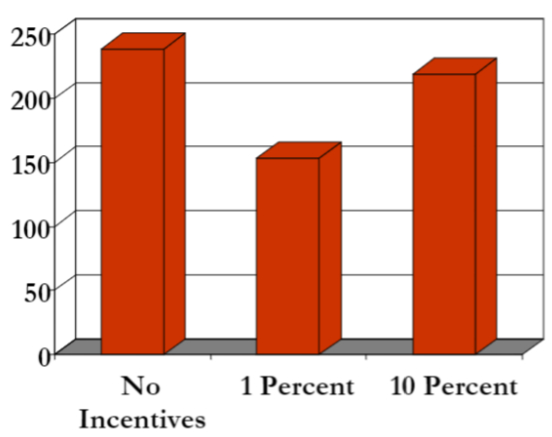
Does pay for performance lead to stress?
It depends on two factors within the company:
Experience: The more experience the employee has, the less they perceive a high compensation share as stressful.
Leader relationship quality: In employees with a high leader relationship quality, the compensation share has no effect on their stress level.
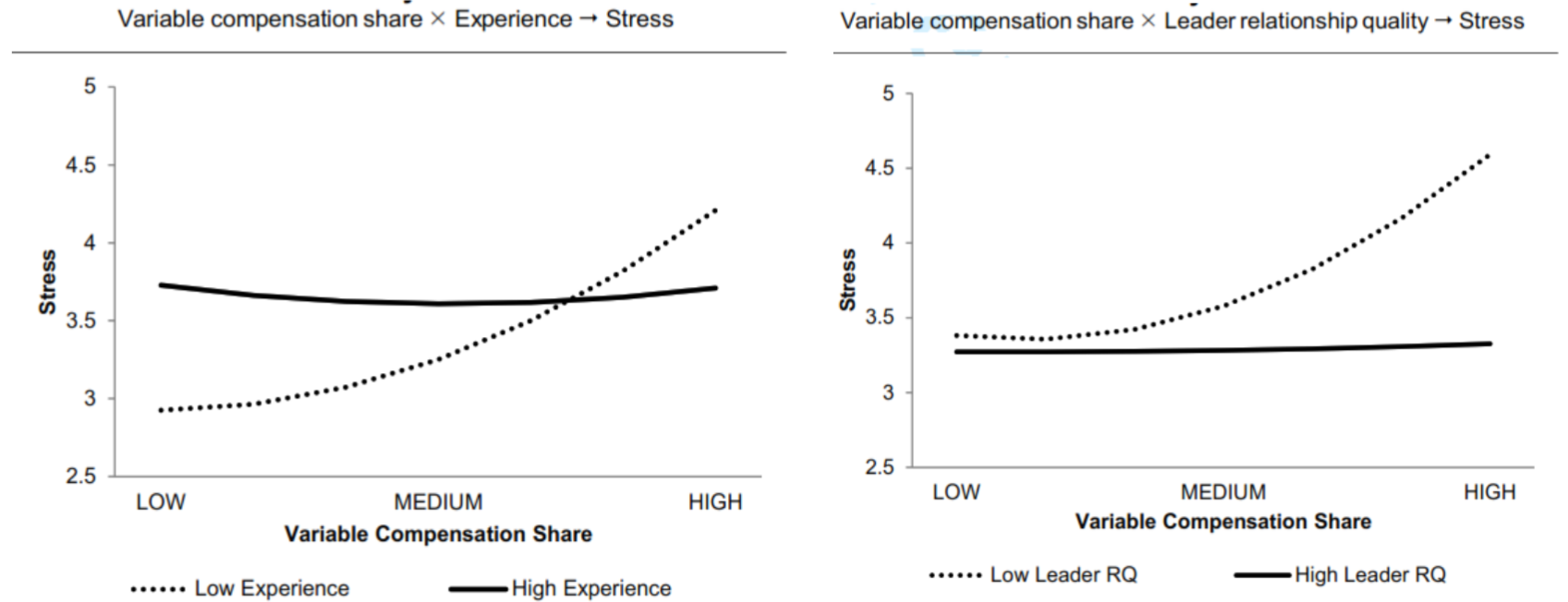
Which could be unintended consequences of pay for performance?
= consequences companies do not aim at, but occur due to the nature of this reward system.
Functional fixedness (focus is narrowed on rewarded tasks)
Fraud (ex. mechanics will recommend unnecessary repairs bc they get bonus for each repair)
Contrastive Upward Comparison → Feelings of Envy → Malicious Envy → Counterproductivity (can result in sabotaging)
Describe the two experiments done on unintended consequences. What was the setting and key findings? (candle problem)
First experiment was the candle problem, where ppl were sat in a room with a box of nails, a candle and matches. They had to attach the candle to the wall, without it dripping.
Second experiment had the same set up, but the participants were split into two groups: one group was told their time was measured to establish a norm for the time it takes ppl to solve this problem. The other group was told if they solve the problem really fast, the will earn a reward. The first group performed tremendously better.
Conclusion:
Rewards can dull thinking and harm cognitive tasks.
functional fixedness: When we have rewards that are result-oriented, we only focus on these tasks that are rewarded, nothing else.
→ if we want ppl to be creative, we should not rely on pay for individual performance, bc it narrows their focus.
When does pay for performance work?
For simle, easily measurable and rather boring activities.
For activities for which the quantity and the results count.
Achievement of quantitative targets and sales figures.
Individual productivity for piecework activities.
Which are the risks of pay for performance?
Mulltitasking, money priming, and choking under pressure.
Bad behavior and increased risk-taking
Crowind-out effects on intrinsic motivation
Emotional exhaustion, lack of affective commitment and burn-out risk
Collaboration damage, dog-eat-dog mentality and competitive thinking
Why is Compensation strategically important?
Because it can be used to attract, retain and motivate talented employees.
When can performance-based pay be effective?
When performance-based pay is designed to support strategic objectives while avoiding the liabilities associated with such pay (e.g. crowding out effect and unintended consequences).
Which are the major choices to be made when designing performance-based pay?
Which rewards to offer
How high these rewards should be (recommendation: bonus level not as high as base level pay)
Which performance measures to use
How to create the link between performance measures and the rewards (horizontal alignment)